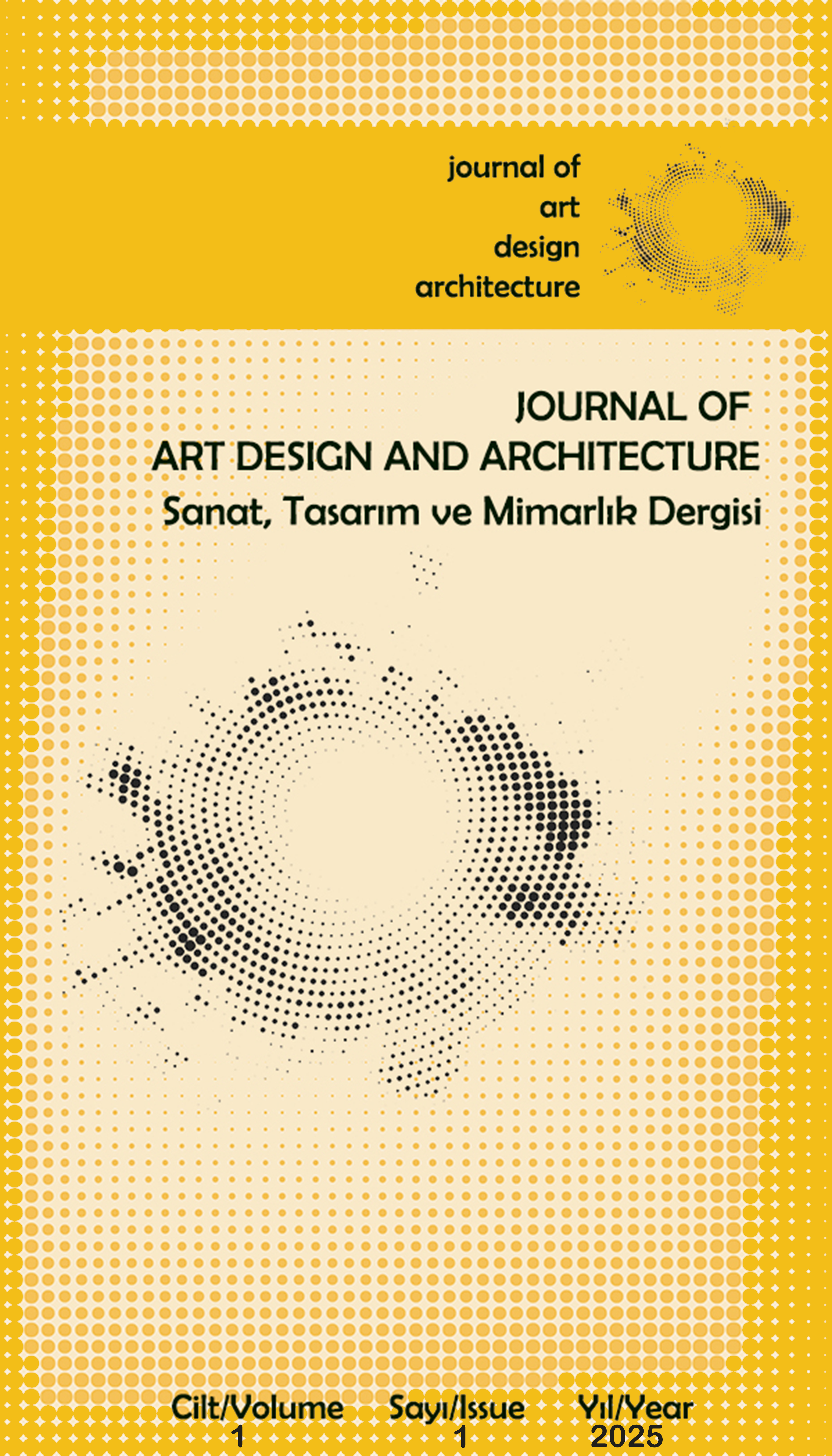Abstract
This study examines the theoretical and conceptual foundations of
sustainability, ecology, energy efficient design and biomimicry in the fields of art, design
and architecture. In the face of global environmental problems, the adoption of a
sustainable design approach has become inevitable. Problems such as depletion of natural
resources, increase in carbon emissions and environmental degradation necessitate the
development of new approaches in design and architecture disciplines. The main problem
of the study is that although the principles of sustainability are accepted in theory, they are
not sufficiently applied in practice. In this context, it may be possible to develop more
environmentally friendly and energy efficient design strategies by integrating biomimicry
and ecological design principles. The hypothesis of the study suggests that the systematic
incorporation of biomimicry and ecological principles into design and architecture
processes will create sustainable and resilient buildings. As a methodology, a
comprehensive literature review on sustainable design, biomimicry and ecological
architecture is conducted, and the effectiveness of sustainable practices is evaluated
through interviews and surveys with experts in the field of art, design and architecture. In
addition, sustainable projects around the world are comparatively analyzed. This study
aims to contribute to the development of more environmentally friendly and energy
efficient approaches in the fields of art, design and architecture by demonstrating how
sustainable design can bridge the gap between theory and practice.
Keywords: Sustainable Design, Biomimicry, Ecological Architecture, Energy Efficiency
References
Anker, P. (2007). Buckminster Fuller as Captain of Spaceship Earth. Minerva, 45(4), 417–434. https://doi.org/10.1007/s11024-007-9066-7
Kibert, C. J. (2016). Sustainable Construction. Green Building Design and Delivery, Wiley.
Favero, P. G. (1978). Soft energy paths: Toward a durable peace. Journal of Economic Issues, 12(4), 960–963. https://doi.org/10.1080/00213624.1978.11503600
Hollweck, T. (2015). [Review of the book Case study research design and methods (5th ed.), by R. K. Yin]. Canadian Journal of Program Evaluation, 30(1), 108–110. https://doi.org/10.3138/cjpe.30.1.108
IPCC. (2021). Climate change 2021: The physical science basis. https://www.ipcc.ch/report/ar6/wg1/
Hargroves, K. J., & Smith, M. H. (2006). Innovation inspired by nature: Biomimicry. Ecological Chemistry and Engineering S, 13(2), 27–34. https://doi.org/10.1071/EC129p27
Gehl, J. (2013). Cities for people. Island Press.
Elkington, J. (1998). Cannibals with forks: The triple bottom line of 21st century business. New Society Publishers.
Creswell, J. W. (2009). Research design: Qualitative, quantitative, and mixed methods approaches (3rd ed.). SAGE Publications.
U.S. Green Building Council. (2020). LEED v4.1 building design and construction. (https://www.usgbc.org/leed)
Lehmann, S. (2010). The principles of green urbanism: Transforming the city for sustainability. (pp. 1-15). London: Earthscan.
Pacheco, R., Ordóñez, J., & Martínez, G. (2012). Energy efficient design of building: A review. Renewable and Sustainable Energy Reviews, 16(6), 3559–3573. https://doi.org/10.1016/j.rser.2012.03.045
Rockström, J., Steffen, W., Noone, K., Persson, Å., Chapin, F. S., Lambin, E. F., Lenton, T. M., Scheffer, M., Folke, C., Schellnhuber, H. J., Nykvist, B., De Wit, C. A., Hughes, T., van der Leeuw, S., Rodhe, H., Sörlin, S., Snyder, P. K., Costanza, R., Svedin, U., ... Foley, J. A. (2009). A safe operating space for humanity. Nature, 461(7263), 472–475. https://doi.org/10.1038/461472a
Di Salvo, S. (2023). A-scientific publications.
Steffen, W., Richardson, K., Rockström, J., Cornell, S. E., Fetzer, I., Bennett, E. M., Biggs, R., Carpenter, S. R., De Vries, W., De Wit, C. A., Folke, C., Gerten, D., Heinke, J., Mace, G. M., Persson, L. M., Ramanathan, V., Reyers, B., & Sörlin, S. (2015). Planetary boundaries: Guiding human development on a changing planet. Science, 347(6223), 1259855. https://doi.org/10.1126/science.1259855
World Commission on Environment and Development (WCED). (1987). Report of the World Commission on Environment and Development: Our common future. Oxford University Press.
Wilber, D. (2010). [Review of the book Cradle to cradle: Remaking the way we make things, by W. McDonough & M. Braungart]. Environmental Practice, 12(1), 92–94. https://doi.org/10.1017/S1466046609990494
Yang, B., & Li, S. (2016). Design with nature: Ian McHarg’s ecological wisdom as actionable and practical knowledge. Landscape and Urban Planning, 155, 21–32. https://doi.org/10.1016/j.landurbplan.2016.04.010

This work is licensed under a Creative Commons Attribution 4.0 International License.
Copyright (c) 2025 journal of Art, Design and Architecture (JADA)

